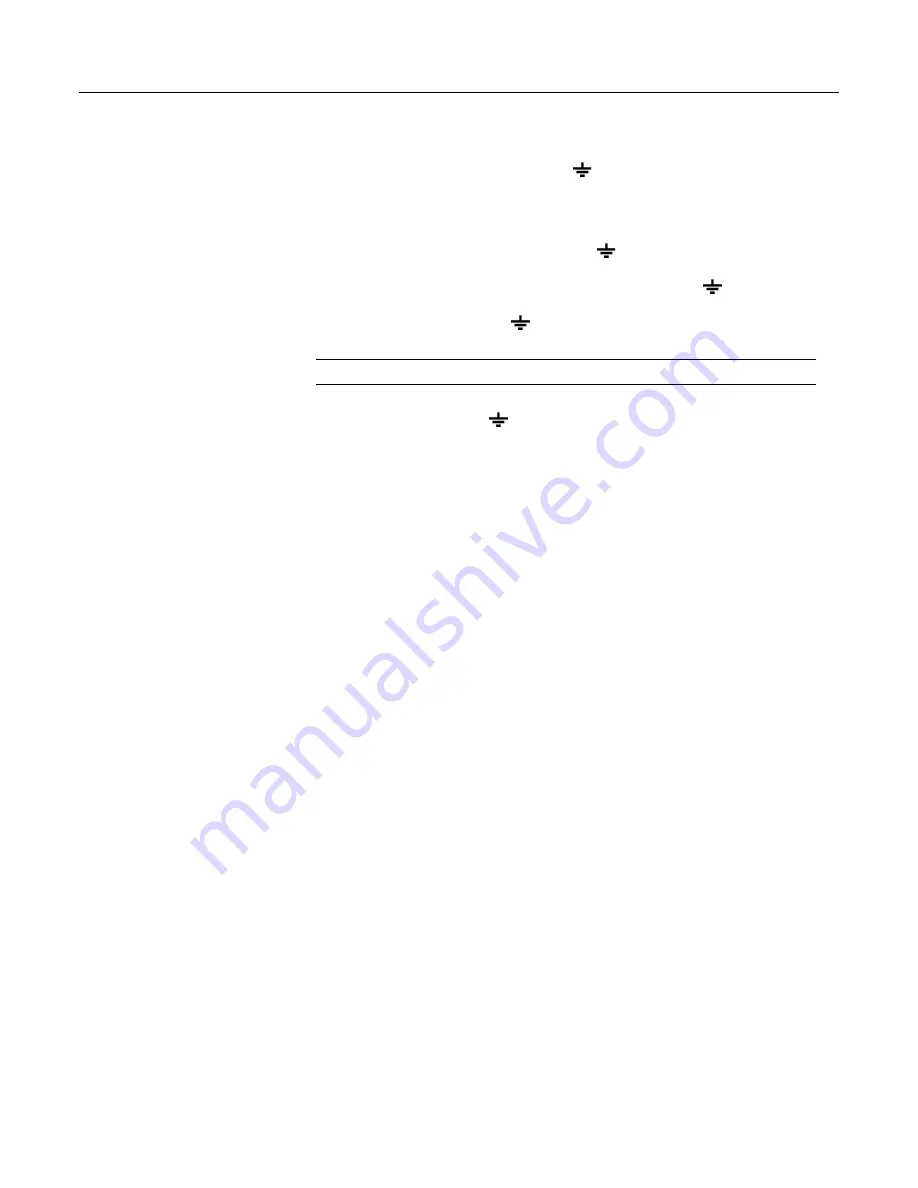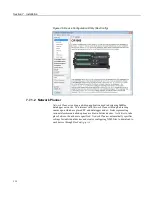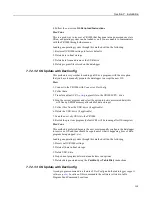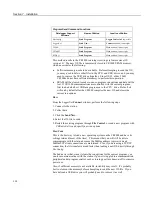
Section 7. Installation
fluctuations by separating signal grounds ( ) from power grounds (
G
). To take
advantage of this design, observe the following rules:
•
Connect grounds associated with
12V
,
SW12
,
5V
, and
C1
–
C8
terminals to
G
terminals.
•
Connect excitation grounds to the nearest
terminal on the same terminal
block.
•
Connect the low side of single-ended sensors to the nearest terminal on
the same terminal block.
•
Connect shield wires to the terminal nearest the terminals to which the
sensor signal wires are connected.
Note
Several ground wires can be connected to the same ground terminal.
If offset problems occur because of shield or ground leads with large current flow,
tying the problem leads into terminals next to terminals configured for
excitation and pulse-count should help. Problem leads can also be tied directly to
the ground lug to minimize induced single-ended offset voltages.
7.6.3 Ground-Potential Differences
Because a single-ended measurement is referenced to CR1000 ground, any
difference in ground potential between the sensor and the CR1000 will result in a
measurement error. Differential measurements MUST be used when the input
ground is known to be at a different ground potential from CR1000 ground. See
the section
Single-Ended Measurements — Details
(p. 307)
for more information.
Ground potential differences are a common problem when measuring full-bridge
sensors (strain gages, pressure transducers, etc), and when measuring
thermocouples in soil.
7.6.3.1 Soil Temperature Thermocouple
If the measuring junction of a thermocouple is not insulated when in soil or water,
and the potential of earth ground is, for example, 1 mV greater at the sensor than
at the point where the CR1000 is grounded, the measured voltage is 1 mV greater
than the thermocouple output. With a copper-constantan thermocouple, 1 mV
equates to approximately 25 °C measurement error.
7.6.3.2 External Signal Conditioner
External instruments with integrated signal conditioners, such as an infrared gas
analyzer (IRGA), are frequently used to make measurements and send analog
information to the CR1000. These instruments are often powered by the same
Vac-line source as the CR1000. Despite being tied to the same ground,
differences in current drain and lead resistance result in different ground
potentials at the two instruments. For this reason, a differential measurement
should be made on the analog output from the external signal conditioner.
7.6.4 Ground Looping in Ionic Measurements
When measuring soil-moisture with a resistance block, or water conductivity with
a resistance cell, the potential exists for a ground loop error. In the case of an
ionic soil matric potential (soil moisture) sensor, a ground loop arises because soil
109
Summary of Contents for CR1000
Page 2: ......
Page 4: ......
Page 6: ......
Page 32: ......
Page 36: ......
Page 38: ......
Page 40: ......
Page 60: ...Section 4 System Quickstart Figure 16 PC200W View Line Graph 60 ...
Page 96: ......
Page 98: ...98 ...
Page 302: ......
Page 453: ...Section 8 Operation Figure 115 Using the Keyboard Display 453 ...
Page 456: ...Section 8 Operation Figure 118 Real Time Custom 456 ...
Page 457: ...Section 8 Operation 8 8 1 3 Final Memory Tables Figure 119 Final Memory Tables 457 ...
Page 458: ...Section 8 Operation 8 8 2 Run Stop Program Figure 120 Run Stop Program 458 ...
Page 460: ...Section 8 Operation Figure 122 File Edit 460 ...
Page 461: ...Section 8 Operation 8 8 4 PCCard Memory Card Display Figure 123 PCCard CF Card Display 461 ...
Page 478: ......
Page 506: ......
Page 536: ......
Page 636: ......
Page 642: ......
Page 644: ......
Page 676: ......
Page 677: ......
















































